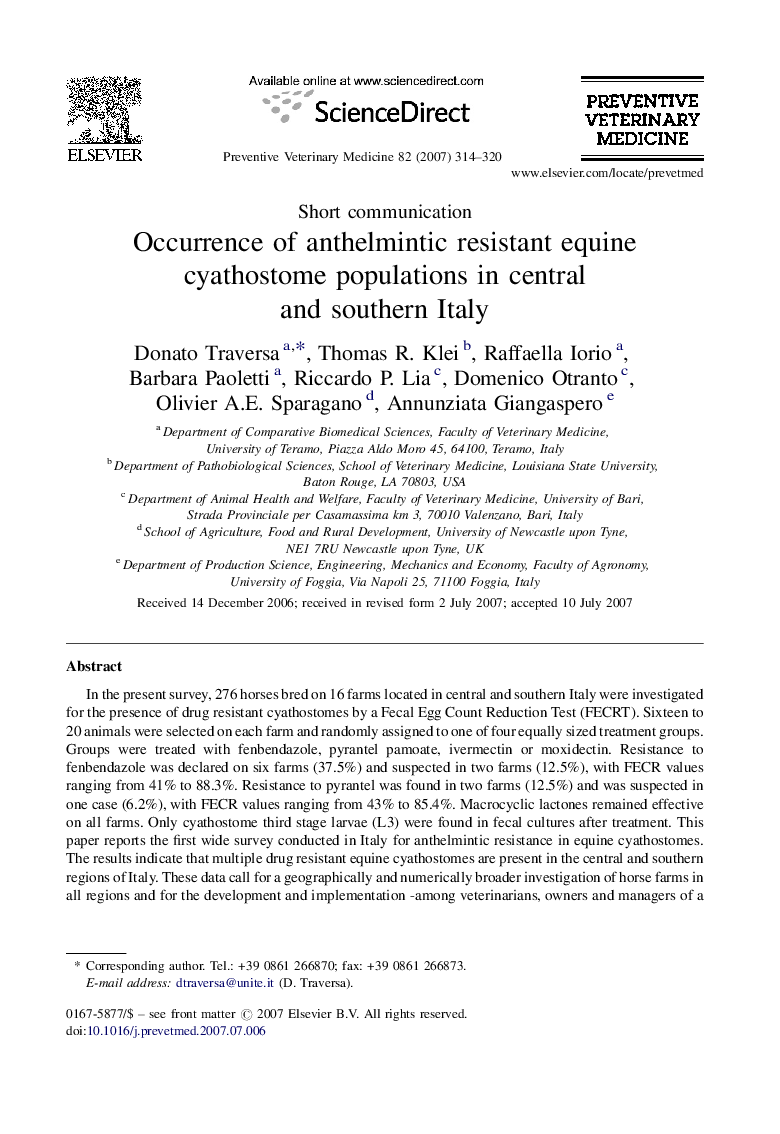| Article ID | Journal | Published Year | Pages | File Type |
|---|---|---|---|---|
| 2453445 | Preventive Veterinary Medicine | 2007 | 7 Pages |
Abstract
In the present survey, 276 horses bred on 16 farms located in central and southern Italy were investigated for the presence of drug resistant cyathostomes by a Fecal Egg Count Reduction Test (FECRT). Sixteen to 20 animals were selected on each farm and randomly assigned to one of four equally sized treatment groups. Groups were treated with fenbendazole, pyrantel pamoate, ivermectin or moxidectin. Resistance to fenbendazole was declared on six farms (37.5%) and suspected in two farms (12.5%), with FECR values ranging from 41% to 88.3%. Resistance to pyrantel was found in two farms (12.5%) and was suspected in one case (6.2%), with FECR values ranging from 43% to 85.4%. Macrocyclic lactones remained effective on all farms. Only cyathostome third stage larvae (L3) were found in fecal cultures after treatment. This paper reports the first wide survey conducted in Italy for anthelmintic resistance in equine cyathostomes. The results indicate that multiple drug resistant equine cyathostomes are present in the central and southern regions of Italy. These data call for a geographically and numerically broader investigation of horse farms in all regions and for the development and implementation -among veterinarians, owners and managers of a plan to reduce the expansion of these anthelmintic resistant populations and control these important parasites.
Keywords
Related Topics
Life Sciences
Agricultural and Biological Sciences
Animal Science and Zoology
Authors
Donato Traversa, Thomas R. Klei, Raffaella Iorio, Barbara Paoletti, Riccardo P. Lia, Domenico Otranto, Olivier A.E. Sparagano, Annunziata Giangaspero,
